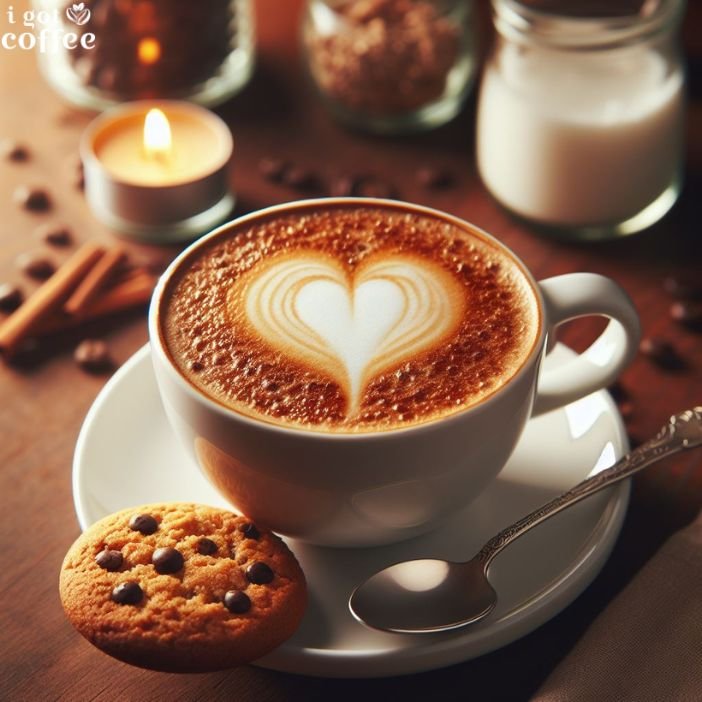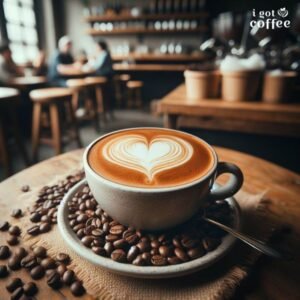When the summer months roll around, we transition from hot coffee to iced coffee for our caffeinated refreshment. Cold brew is especially popular, with its full, rounded flavor, and is made differently from typical iced coffee.
What is Cold Brew Coffee?
Cold-brewed coffee, or cold brew, is coffee made by steeping ground coffee in room-temperature water for several hours, usually 12 to 18 hours or even longer, then straining out the grounds and chilling it before serving it either as-is, over ice, or diluted with water.

Cold brewing extracts the flavor along with the caffeine from the coffee beans, producing a rich, flavorful, and stimulating brew. As with conventional coffee, milk, cream, and/or sugar are frequent add-ins with cold brew as well.
Cold brew aficionados say that the flavor of cold brew is much smoother and milder and lacking in the acidic quality of ordinary brewed coffee. This is because cool water doesn’t bring about the chemical changes that produce the acidity as well as the bitter flavor associated with hot coffee.
Fast Facts
- Made by steeping coffee grounds in room temperature water
- Smoother, less acidic flavor
- Takes 12 to 18 hours to brew
Cold Brew Vs. Iced Coffee
Cold brew is similar to iced coffee but not exactly the same. While cold brew is made by steeping coffee grounds at room temperature for a long time, conventional iced coffee is made by brewing hot coffee using a standard method and then chilling it either by refrigerating it or pouring it over ice.
The trouble with iced coffee is that it can taste a bit weak once it’s been poured over ice since the ice dilutes the coffee as it melts. This can be remedied by brewing the coffee at double strength for iced coffee. Unfortunately, this can also end up doubling the acidity and bitterness.
With cold brew, it’s possible to brew the coffee at any strength you desire, factoring in that it will be served over ice, simply by altering the ratio of grounds to water. This way you can enjoy your chilled coffee without diluting it and without the unpleasant flavors that can result from hot brewed coffee. Indeed, some cold brew enthusiasts say that cold brew tastes so good, they don’t need to add cream or sugar to it at all.
How to Make Cold Brew
To make cold brew coffee, all that is needed is cool or room-temperature water, preferably filtered, plus some freshly ground coffee beans; a vessel, like a pot, pitcher, or jar to brew in; as well as some way of filtering the coffee. Cold brew can also be prepared in a French press coffee pot or in a dedicated cold brew coffee makers.
The basic procedure is to combine water and beans in a specific ratio, which will vary according to taste and how the finished brew is used. Common ratios of water to coffee (by weight) range approximately from 4:1 to 10:1. Then let the brew sit, covered, for somewhere between 12 to 18 hours, although this too will vary based on personal taste. Once the allotted time has elapsed, strain the coffee through a filter, chill, and serve.
Making cold brew coffee is relatively simple and requires only a few basic pieces of equipment. To start, you will need a large container to hold the cold water and coffee grounds, a fine mesh strainer, and a coffee filter.
Begin by adding cold water to the container and then slowly adding the coffee grounds. Stir the mixture gently to ensure the grounds are evenly distributed. Allow the mixture to steep for 12-24 hours in the refrigerator.
Once the mixture has steeped, strain it through the fine mesh strainer and then through the coffee filter. This will remove any remaining grounds and produce a smooth, flavorful cold brew.
How to Drink Cold Brew
Cold brew coffee is usually prepared as an iced beverage, but it can also be heated. It can be served with cream and sugar, just like ordinary coffee.
Caffeine Content in Cold Brew
Speaking of concentrate, because of the variance in strength of brew, many people report that cold brew can pack a stronger wallop in terms of caffeine content. But it’s not because cold brewing extracts more caffeine; hot water actually extracts more. It’s brewing as a concentrate that produces a higher caffeine content per volume of liquid. But diluting it with water as described above will also dilute the caffeine content.
Can You Make Cold Brew in the Fridge?
The name cold brew, combined with the final drink being chilled, might suggest that the brewing is actually taking place in the refrigerator. However, this usually isn’t the case. Cold temperatures slow down the extraction process; meaning, a cold brew that is steeped in the fridge will taste weak by comparison with one that’s steeped for the same amount of time at room temperature. It can still be brewed it in the fridge, but it will require a longer brew.
Buying and Storing
Cold brew concentrate or ready-to-drink cold brew can be purchased in the refrigerated beverage sections of many supermarkets and other retailers. It’s usually sold in bottles or cans. Home made cold brew can be stored in the fridge for up to two weeks. Commercially produced cold brew will feature a “best-by” date printed on the can or bottle.
Can You Heat Up Cold Brew?
Finally, if you’re wondering whether you can heat up cold brew, you can. The simplest way is to heat the cold brew in the microwave or in a saucepan on the stovetop. Heating it this way doesn’t change the smooth, acid-free flavor profile of your cold brew. Another approach is to prepare a concentrate, and rather than diluting it with cold water, dilute it with hot water.
Unraveling the World of Coffee

James Hoffmann, a Coffee Science graduate from the University of London, is a notable figure in the coffee world. With experience as a barista, roaster, and consultant, he brings a wealth of knowledge from bean to cup. James’ writing is passionate and insightful, providing readers with valuable and approachable coffee content.








